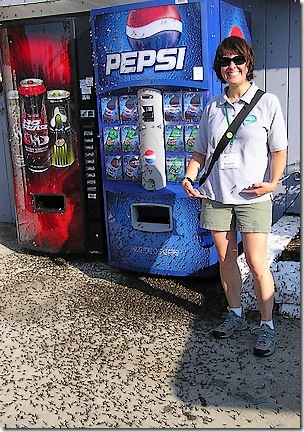 In an interesting turn of events it appears the Hexagenia mayflies of Lake Erie may be blamed for polluting the lake.
In an interesting turn of events it appears the Hexagenia mayflies of Lake Erie may be blamed for polluting the lake.
… nasty little buggers, those …
In a similar experiment, Chaffin found that a burrowing mayfly can kick up buried phosphorus. Once that phosphorus is back in the water, it can fuel more algae blooms.
“There is an effect,” Chaffin said “I don’t know if it’s just a drop in a bucket, or if it is a main reason why we’d be seeing these blooms come back since mayflies have come back.”
Even if the return of the mayflies has contributed to the resurgence of algae blooms and low oxygen, it’s not a sign that Lake Erie managers need to kick the bugs back out.
“It’s not necessarily the mayflies’ fault that there’s so much phosphorus in the sediment,” Chaffin said. “The mayflies are going to do their thing if there’s a lot of phosphorus or not.”
Water managers are less than concerned as they know the arrival of the Asian carp will ensure those pesky mayflies get their comeuppance in spades.
… it’s the cheaper alternative to dismantling the electric fish barrier, boosting the voltage and dragging it along the bottom to zap hidden mayfly terrorist cells.
“I grew up on the shores of Lake Erie, so I remember there being no mayflies,” he said. “So every time I’m wiping mayfly guts off my feet, I don’t get too upset about it.”
Tags: Great Lakes, Asian Carp, Hexagenia Limbata, algae bloom, phosphorus sediment, mayfly burrow, fly fishing humor
